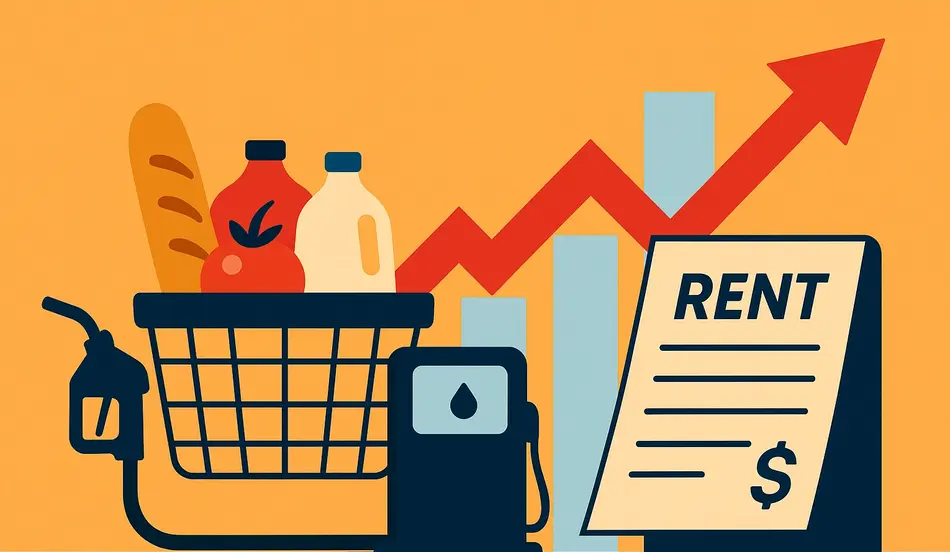The August inflation report has sent shockwaves through households and policymakers alike, revealing that consumer prices have risen more than anticipated. This development is not just a matter of economic statistics—it’s a reality impacting voters and daily life across the country. In this comprehensive analysis, we’ll break down the key findings of the August inflation report, explore the specific price increases affecting Americans, and examine the broader economic and political implications as the nation heads into a critical election season.
Understanding the August Inflation Report
The August inflation report, released by the U.S. Bureau of Labor Statistics, showed that the Consumer Price Index (CPI) increased by 0.6% in August, outpacing economists’ expectations. Year-over-year, inflation stands at 3.7%, a figure that has left many Americans concerned about their purchasing power and financial stability. For a detailed breakdown of the report, visit the official BLS release.
Consumer Price Increases: Gas, Food, Shelter, and Airfare
One of the most striking aspects of the August inflation report is the breadth of price increases. Gasoline prices surged by 10.6% in August alone, driven by global supply constraints and increased summer travel demand. Food prices continued their upward trajectory, with staples like eggs, bread, and dairy products seeing notable hikes. Shelter costs, which include rent and homeownership expenses, rose by 0.3%, while airfare jumped 4.9% as airlines passed higher fuel costs onto consumers. These increases are not just numbers—they represent real challenges for families trying to make ends meet.
Impact on Voters and Daily Life
With the election season approaching, the August inflation report has become a central issue for voters. Rising prices are eroding consumer confidence and shaping political debates. Many voters cite inflation as their top concern, influencing their choices at the ballot box. The report’s findings are also affecting daily life, from grocery shopping to commuting, as Americans adjust their budgets and spending habits.
Dollar Tree Price Increases and Farmer Struggles
Retailers like Dollar Tree have responded to inflation by raising prices on many items, a move that has drawn criticism from budget-conscious shoppers. Meanwhile, farmers are facing higher input costs for fuel, fertilizer, and equipment, squeezing profit margins and threatening the stability of the agricultural sector. These challenges highlight the far-reaching impact of inflation beyond urban centers and into rural communities.
August Inflation Report: Costs Rising Faster Than Expected
With consumer prices climbing and daily life getting more expensive, employers can make a real difference by offering opportunities that matter. Post your job on WhatJobs today and connect with candidates looking for stability — free for 30 days.
Post a Job Free for 30 Days →Economic Implications and Policy Responses
The August inflation report has prompted renewed debate among economists and policymakers about the best path forward. The Federal Reserve faces pressure to balance interest rate hikes with the risk of slowing economic growth. Some experts warn that persistent inflation could lead to stagflation, while others argue that targeted relief measures are needed to support vulnerable populations. For more insights on economic policy, read our in-depth coverage on financial markets and Fed rate expectations.
Internal Resources for Navigating Inflation
At WhatJobs, we’re committed to helping you navigate these challenging times. Explore our latest articles on producer prices, jobs report, and market analysis to stay informed. If you’re looking for new opportunities or want to post a job, post your job with WhatJobs today and connect with top talent.
FAQs: August Inflation Report
What is the August inflation report?
The August inflation report is a monthly summary released by the U.S. Bureau of Labor Statistics detailing changes in consumer prices, also known as the Consumer Price Index (CPI). It provides insights into how much prices have increased or decreased over the past month and year.
How does the August inflation report affect voters?
The August inflation report affects voters by highlighting changes in the cost of living, which can influence political opinions and decisions at the polls. Rising prices are often a key concern for voters during election seasons.
Which prices increased the most in the August inflation report?
According to the August inflation report, gasoline, food, shelter, and airfare saw the most significant price increases. These categories directly impact household budgets and daily expenses.
A Family’s Experience with August Inflation
Consider the Smith family, who live in a mid-sized city. After reviewing the August inflation report, they noticed their monthly grocery bill had increased by $75 compared to last year. Gasoline for their two cars now costs an extra $40 per month, and their rent has gone up by $100. These changes have forced the Smiths to cut back on dining out and postpone a planned vacation. Their story is a real-life example of how the August inflation report translates into everyday challenges for American families.
Stay tuned to WhatJobs for ongoing updates and expert analysis on the August inflation report and its impact on your life and career.




